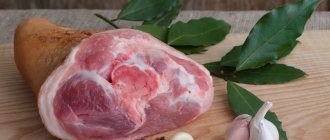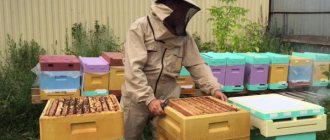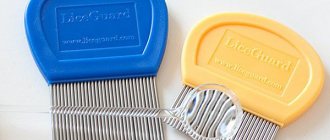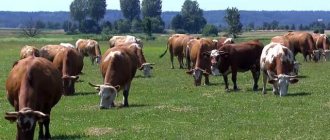Feeding hens and chicks with compound feed significantly accelerates their growth and development. The bird gains weight faster, and the egg production of laying hens increases by 15%. And with the addition of minerals and vitamins, poultry productivity increases by 25-30%. Moreover, it does not matter what kind of compound feed to feed the bird - factory-made or home-made, the main thing is that it contains everything necessary for the bird’s body.
Compound feed as a guarantee of productivity of farm animals
In the course of scientific research, it was revealed that the greatest productivity of animals and birds in the agricultural sector is manifested exclusively with proper organization of feeding. It is important to take into account both physiological characteristics and nutrient balance. It can be provided by ready-made mixed feed. They are developed through advances in biochemistry and the study of animal physiology.
Compound feed is a feed mixture purified and crushed to a certain state. It is important to note that it can be of both plant and animal origin. In order to enrich the feed, vitamins, micro- and macroelements, enzymes and other components are added to it, which stimulate proper growth and contribute to the development of animal husbandry. The mixture consists of a homogeneous mass, immediately ready for use.
Types of feed production:
- Briquetted. The most convenient for transportation. Briquettes do not take up much space and do not deteriorate during transportation. They are stored for a long time.
- Granulated. The advantage is the saving of labor resources when feeding, since the granules do not require additional processing. Convenient for fattening.
- Loose. The main advantage is a long shelf life. However, it is difficult to transport and store. Over time, due to the natural separation of the powder composition, animals can become poisoned.
- Krupka. Made by grinding feed granules to particles of a given size. Unlike placer, with which it is often confused, grits are not only crushed and mixed, but also thermally processed. When animals eat it, they receive all the components included in the feed.
Main components of feed
All components are selected based on their chemical composition. The main task is the effective absorption of nutrients required by animals for healthy life. It is for this reason that compound feeds are suitable for complete feeding and are actively used in intensive livestock farming.
The main components included in the feed from "Southern Corona": wheat, corn, barley, corn germ cake, sunflower cake, soybean cake, fish meal, pea concentrate, limestone flour, monocalcium phosphate, ZOM, meat and bone meal, wheat bran, grass flour, etc.
In addition to the above, special additives can be added: antioxidants, flavors, vitamin premixes, enzymes, amino acids, probiotics.
Please note that the composition does not include growth stimulants, antibiotics, etc. Thus, vitamin feeding and preventive vaccination are required on your own in accordance with the recommendations of veterinarians.
A feed mixture rich in all of the above components helps improve the quality of livestock farming.
Purpose of feed
As a rule, compound feed consists of various types of grain crops in combination with additional vitamins and feed additives. The percentage composition of a particular component varies depending on the type of animal, its age, biological condition and needs.
Feed additives promote systematic, proper development at all age stages. Special mixtures that are designed to solve specific problems (for example, for broilers) save money on maintenance and also stimulate active weight gain.
If you choose the composition of the future feed correctly, you can significantly reduce food costs and increase productivity. This fact has been repeatedly confirmed by Russian and foreign scientists in the field of animal husbandry.
Varieties
Let's look at what types of feed for broilers the manufacturer offers today.
As a rule, all mixtures are divided into several groups: pre-start, starting, growth and finishing.
Suitable pre-start feed for day-old broilers. The main task at this time is to set the pace and allow proper development, as well as to accustom babies to consuming dry food.
From the first week until the age of one month, babies are given a start. For example, it could be Solnyshko compound feed. Over the entire period, one individual usually eats about 1 kg. By the 21st week, the bird gains a weight of 750-800 g. Therefore, it can be argued that starter feed for broilers increases early maturity and gives the maximum impetus for full development and growth. It contains more protein.
They buy growth feed for young broilers that are in the development phase. This is approximately from 22 to 35 days. For the entire period, the mixture consumption is about 2 kg. At the end of growth feed consumption, the chicks weigh 1.6 kg each. A couple of weeks before slaughter, which is approximately 36 to 42-56 days, they switch to the finishing mixture. During this time, one individual eats about 1.3 kg. And at the end the bird weighs at least 3.5 kg.
Of course, nutrition is very important for raising poultry. But it is also important to provide enough water. One individual drinks 2 times more water than it eats food. The temperature and humidity in the chicken coop must also meet the standards.
Main types and types of feed
There are 2 types of feed, depending on its purpose. Let's take a closer look at them.
- Compound feed concentrate (marker - letter K).
This variety is an additional source of nutrition and cannot act as independent food. Concentrated feed contains a large number of vitamins and microelements. In combination with the main meal, the concentrate supplements it with all the required substances that the animal lacks during a given period.
- Complete feed (marker - letter PC).
Acts as the main food and does not require additional complementary foods, as it satisfies all the needs for nutritional, mineral and biologically active elements. Complete feed is used every day. As a rule, this diet is suitable for feeding most animals.
It should also be said about two types of additives, which include:
- Protein-vitamin-mineral concentrates. They contain biologically active substances, amino acids, macro- and microelements in an optimal ratio. Supplements act as additional complementary foods and are not used in feeding on their own. Some types of BVMK contain feed antibiotics. They provide better safety, productivity and health of animals and poultry. They do not affect humans because they do not accumulate in meat and products.
- Premixes. They are used to saturate the main feed and improve the composition of the protein-vitamin-mineral supplement. We produce premixes according to scientifically based recipes, including a whole range of biologically active substances in accordance with the recommendations of the Russian Ministry of Agriculture. They may have different compositions depending on their purpose. For example, the “Start” premix for birds contains vitamins A, D3, E, B1, B2, B3, B4, B5, B6, B12, K3, Bc C, H-Biotin, iron, manganese, copper, zinc, cobalt, iodine and selenium.
Equipment examples
| Name | power, kWt | Possibilities | Cost in rubles, |
| PDA | 4-5 | Multifunctional line | From 550,000 |
| KKU | 4-5 | Multifunctional line | From 450,000 |
| LBMVC | 16-30 | For protein and mineral supplements | From 150,000 |
| LH | 30-130 | Industrial granulator | From 170,000 |
| LG mini | 15 | Household granulator | From 90 000 |
| PZ | 3-5 | Flattening | From 70 000 |
| DKR | 10-100 | grain crusher | From 170,000 |
| SSK | 1-5 | Screw type mixer | From 70 000 |
| SVG, SL | 1-11 | Horizontal mixer | From 90 000 |
| TS | 1-5 | Screw | From 80 000 |
| BM, BGP | 1-15 | Bunker | From 65,000 |
| OGM, DG | 20-110 | Granulator | From 350,000 |
| DG mini | 2-22 | Household type granulator | From 70 000 |
| EVDU | — | Dispenser | From 45 000 |
The cost of a high-quality line ranges from 300,000 rubles. It can take up to 1 million rubles to purchase ready-made feed for the season. If you buy grains separately, it comes out 2-3 times cheaper. The payback period for a small plant is a year and a half. The profitability of production is quite high.
Physical and chemical indicators of compound feed
Homogeneous food in granules is quickly digested. Such nutrition has a positive effect on the productivity of the agricultural sector of the economy.
If we talk about the composition of the feed, it should be noted that it varies depending on the specific animal.
The quality indicators of feed are influenced by:
- humidity and water absorption;
- granule size (diameter);
- flowability;
- fragility and water resistance;
- density and viscosity;
- volume.
The physical and chemical characteristics of the feed mixture for animals directly depend on the characteristics of the elements included in its composition, as well as their percentage. Flowability is affected by the size of one granule and the value of equilibrium moisture content. If you examine the chemical composition, then everything will depend on the content of certain nutritional elements (vitamins, fiber, etc.).
At the production stage, the feed is tested for compliance with quality standards, after which it receives a certificate. The buyer is provided with a document indicating the company producing the specific feed, recipe number, purpose, composition and sales period.
What is EKE?
EFU are energy feed units, which are an indicator of the nutritional value of animal feed.
1 EKE = 10 MJ Exchangeable Energy (EE).
1 J of energy = 0.239 calories
1 calorie = 4.184 J
Until 1975, in Soviet feeding science there was an oat feed unit, which was proposed by E.A. Bogdanov... The starch equivalent, which was developed by the German scientist Oscar Kellner, was taken as the basis.
1 kg of medium quality oats = 0.6 starch equivalent
But since the United States and the West have long measured the nutritional value of feed in thermal energy, the decision was made to switch to calorie calculations. Thus, it turns out that the nutritional value of feed in animals is measured in the same way as in humans - in calories, only it is called by a different EKE,
I hope that this topic was interesting to you. In the future, I plan to further develop the topic of the basics of proper feeding (nutrition) of cows. So stay tuned and remember that the right approach to feeding is the key to your success and the health of your cow.
Compositions of feed types
Compound feed is always selected individually for each type of animal. In the selection process, it is necessary to take into account age and food group. Obviously, feed for broilers will be different from feed for laying hens.
One of the most important indicators when choosing the right diet is the nutritional value and amount of protein contained in it. Food with a low percentage of protein is considered to be of insufficient quality, since it does not completely satisfy the body in this element.
Grass meal is an important component of most compound feeds, as it contains fiber. It is responsible for normal metabolism and is a vitamin supplement. Despite this, the content of herbal flour should be within reason, since excessive amounts trigger negative processes.
conclusions
- A balanced diet is the key to the well-being of birds and high productivity.
- To feed chickens, special feeds are used that are labeled and physiologically required.
- The productivity of the bird depends on the type of feed (wet, dry or combined).
- Compound feed has both pros and cons when feeding laying hens.
- Homemade mixtures contain the optimal amount of ingredients for good bird development.
Composition of feed for pigs
Compound feed for pigs is a special balanced mixture, the main sources of calories and nutrients in which are cereals, legumes, and animal products. Oilseeds, fresh vegetables and yeast are used to supplement the diet.
Compound feed should include wheat, corn, barley, corn germ cake, sunflower cake, vegetable oil, wheat bran, table salt, limestone flour, amino acids, antioxidant, probiotic, vitamin premix and enzyme in varying proportions.
If the diet is incorrectly selected, the pig develops an upset stomach and, as a result, metabolism is disrupted.
Composition of feed for birds
In the production process, both age and economic category are taken into account. Thus, taking into account individual characteristics, special nutritional mixtures are created for each species.
In addition to energy value indicators, for example, for laying hens it is necessary to create a balance of vitamins and amino acids. A properly selected mineral composition plays a special role for these birds.
The feed should include protein, fat, fiber, calcium, digestible phosphorus, sodium, lysine, and sulfur-containing peptides.
It is necessary to take into account the individual nutritional needs of different species and crosses of poultry. In order to increase the digestibility rate, you can introduce dietary supplements, as well as enzymes. A positive effect is achieved by the introduction of butyric acid, which has a stimulating effect on the villi of the intestinal mucosa.
Thus, the correctly selected proportion of all nutritional and protective elements will improve the quality of growth and maintain health.
Composition of feed for cattle
In the process of choosing food, you can choose a complete feed mixture, which will act as the main meal, and concentrates, which are an additive to the main food.
Waxy corn silage is excellent for intensive fattening. Concentrated feed is also added here.
It must be remembered that at different times of the year and age, the animal needs different amounts of protein. It is also important not to forget about adding sodium (table salt).
When feeding dairy cows, the use of bioactive additives, including growth stimulants, is not recommended, since they do not need to intensively gain weight.
The composition of the feed is selected based on the feeding regime. It is customary to divide the diagram into 3 parts:
- Main feeding (at any time of the day and in any dosage).
- Balancing feeding (replenishing the lack of proteins and other nutrients).
- Concentrated feeding (as a supplement to the main diet).
The feed should contain the following elements:
- grain crops (wheat, corn, barley, corn germ cake, sunflower cake, wheat bran);
- table salt;
- limestone flour;
- monocalcium phosphate;
- amino acids, antioxidants;
- vitamin premix.
Names at home
Of course, it is better to buy high-quality feed. Related production of nutritious food is often organized on large farms. Taking into account the high cost of such a diet, many livestock breeders are turning to their own production of a balanced feed base.
The advantage of a homemade composition will be high quality. In order for the composition of the mixture from home to be complete, you need not only to know what the feed is made from. In addition to the exact quantities of ingredients, you will need some equipment. The simplest units:
- grain crushers;
- granulators;
- dispensers.
Household use does not require large volumes of mixtures. Therefore, it is enough to choose low-power devices that can be connected to a regular electrical network of 380 V. The productivity of mini-factories is sufficient for the production of mixed feed 250-3,000 kg per hour. Modern copies are equipped with fully automated control, so they do not require any special skills.
The sequence of actions for home production can be outlined in several stages:
- selection of constituent components;
- dosing;
- grinding;
- preparation of the mixture.
Recipes compiled at factories take into account all the necessary components in proportions, so you can proceed to the process of preparing the compositions only after purchasing the necessary ingredients.
Daily norms
There are rules for connecting parts together. For example, first you need to mix the crushed cereals. Then meal and cake are added to them. At the last moment, sometimes even before feeding, vitamin and mineral premixes are included in the composition. When fattening cattle, strict daily consumption rates must be observed. You can also take into account the variety of ingredients in recipes for:
- dairy breeds;
- beef cows;
- for stud bulls.
Homemade feed is prepared according to a basic recipe with the following components:
- wheat - 48%;
- barley - 36%;
- cake - 8%;
- feed yeast - 3%;
- bone meal - 3%;
- lime flour - 1%;
- table salt - 0.5%;
- vitamin premix - 1%.
The composition of feed for cattle is ground, mixed, and, if necessary, granulated. Some elements of the home composition can be replaced. For example, instead of meat and bone meal, fish meal is suitable. It is a source of calcium, so in fact you can even use eggshells.
Lime flour - phosphorus. It is needed to improve the functioning of the cattle gastrointestinal system. The component will successfully replace chalk, and barley will replace fiber.
It is also needed to improve the functioning of the gastrointestinal system. It cannot be replaced completely, but you can save money by adding small gravel pebbles and river sand instead of part of the barley.
Requirements for the quality of feed
Each batch is tested to ensure compliance with production standards. This issue is dealt with directly by the state. During the verification process, the following indicators are examined: appearance, color, smell, granule size, mass of impurities, humidity, mass fraction of fat, ash, crude protein, fiber and other nutritional elements included in each individual feed.
In addition to checking the percentage of useful substances, the presence of nitrogen and other harmful impurities is determined. Color, smell and appearance depend on the quality of the processed raw materials. The manufacturer does not have the right to add moldy or rotten components to the product.
When studying moisture indicators, the mass fraction is taken into account, which should not exceed:
- for cattle - 14%;
- in poultry - 13%.
The proportion of metallomagnetic impurities should not be more than 30 milligrams per 1 kilogram.
During standardization, the grind size in bulk feed is also studied. To do this, the mixture is sifted through a sieve, and the residues are assessed by volume and weight.
Nutritional features of egg and meat breeds
To feed egg hens, the best option is considered to be compound feed for which you need to take: wheat - 120 g, sunflower meal, chalk and barley - 70 g each, meat and bone meal - 60 g, fish - 50 g, grass - 30 g, feed yeast and peas - 20 g each, vitamins - 10 g, salt 3 g. 100 g of this mixture contains 268 kcal, 17% crude protein.
With a lack of mineral elements, chickens become aggressive and may begin to peck their own eggs.
Laying hens need to be provided with mineral feed, because for the nutritional value of eggs and strong shells, the chicken needs to receive calcium, phosphorus, sodium, iron, etc. It is advisable to add well-crushed chalk, shells, and limestone to wet mash.
Chickens of egg breeds should not be overfed with fishmeal to avoid an unpleasant taste in the eggs.
Broiler breeds of chickens have a slower metabolism than egg breeds. They can overeat and become very fat. Therefore, it is important to balance their feed, given that they need 20% more than laying hens. And there are some peculiarities in feeding chickens of meat breeds:
- It is better to scatter whole grain on the ground rather than pour it into one feeder. This way the chickens will move more and gain less fat.
- Wet mash should be served in such quantity that the birds eat it within 30-40 minutes. You should not allow yourself to eat sour mash, as this will lead to illness.
- Separate feeders should always contain gravel and sand; they improve the digestion of chickens.
The productivity of chickens depends on the feed consumed. At home, birds are often fed grain with additives from the garden or kitchen. Zucchini, pumpkin, grass, potato peelings, and soaked leftover bread are used.
Benefits of compound feed
As mentioned above, the introduction of mixed feed into the diet of animals helps to increase the productivity of dairy cows, the rapid weight gain of pigs, broilers, egg production of chickens, etc. The feed mixture also reduces the cost of feeding animals, since it can act as a complete nutrition.
The effectiveness of feed has been repeatedly proven experimentally in domestic and foreign laboratories. It should be noted that the positive dynamics of its use can only be observed if the production complies with all standards prescribed in GOSTs.
The advantages of using mixed feed include:
- increase in milk yield of dairy cows;
- reduction of nutrient costs for milk production;
- increasing cattle productivity;
- reducing the risk of disease and death;
- economical consumption;
- ease of storage and use;
- variability - you can change the composition of ingredients depending on the situational needs of the animal.
As a rule, a combination feed recipe includes a complete composition that helps not only to normalize the general condition of farm animals and life expectancy, but also to increase productivity (i.e., weight gain, increase in the number of eggs, etc.) It is important to note that the nutritional value is identical to natural products, and in the case of concentrates is even higher.
Consumption standards
There is no set amount of feed for laying hens; farmers set the dosage themselves, based on personal experience. If the chicken has eaten all the food after 20 minutes, there is a lack of product. And a large remainder after 40 minutes of feeding is about excess. Based on such indicators, it is difficult to judge the satiety of birds. As a result, chickens do not receive additional nutrients and vitamins, which leads to vitamin deficiency. In this case, the use of dry feed is more profitable. They come with instructions indicating how much food to give. You should choose a quality product with GOST marking.
It is difficult to control the portion intake when walking poultry. Adult chickens can crowd out young birds. In this case, some gain weight, others gradually lose weight.
As chickens grow older, their need for healthy ingredients increases. Broods of egg breeds (High Line, Leghorn and others) require low levels of calcium and magnesium in their diet compared to laying hens that are mature enough to lay eggs.
Farmers themselves determine how much a laying hen should eat. From the age of 6 months, a chicken eats approximately 100-140 grams of mixture per day (dry, wet or with a mixed diet).











